
Japan Shopping: Ultimate Guide to Tokyo, Osaka & Kyoto's Best Districts, Markets & Boutiques
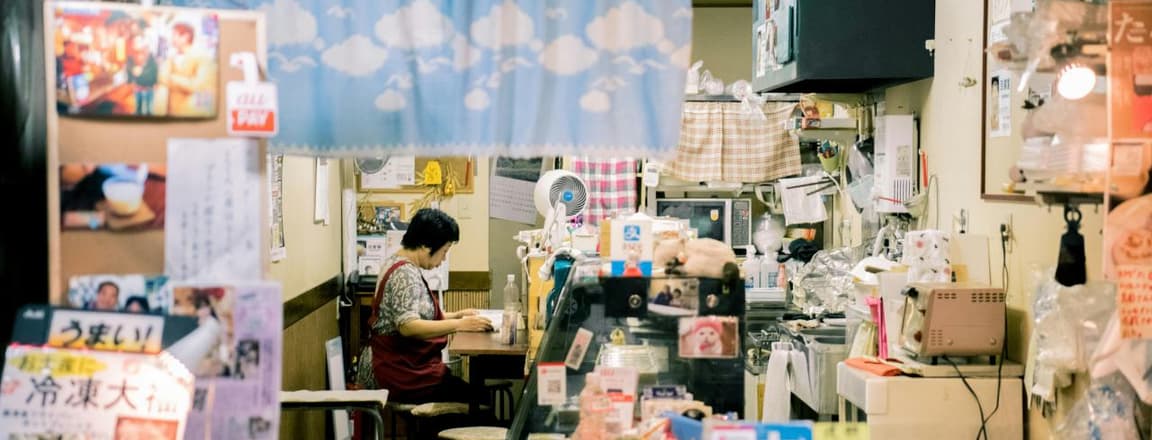
Discover the ultimate guide to shopping in Tokyo, Osaka, and Kyoto, covering luxury boutiques, vintage clothing shops, electronics districts, and traditional craft markets. Whether you're hunting for designer shopping in Ginza or exploring vintage shops in Harajuku, Japan tourism has it all. This comprehensive resource maps the best shopping districts across Japan's three major cities. Learn essential tax-free shopping rules, navigate payment systems, and access neighbourhood-by-neighbourhood breakdowns with timing strategies, budget estimates, and expert tips for maximising your Japanese shopping experience.
Best Shopping by Category in Japan
| Shopping Type | Tokyo | Osaka | Kyoto |
| Luxury & Designer | Ginza, Omotesando | Umeda (Grand Front) | Shijo Kawaramachi |
| Vintage/Thrift | Harajuku, Shibuya | Amerikamura | Teramachi Arcade |
| Electronics | Akihabara | Den Den Town | Kyoto Station |
| Food Markets | Tsukiji Outer Market | Kuromon Ichiba | Nishiki Market |
| Traditional Crafts | Asakusa (Nakamise) | Hozenji Yokocho | Gion District |
Essential Planning Tips: Tax-Free Shopping & Payment Methods
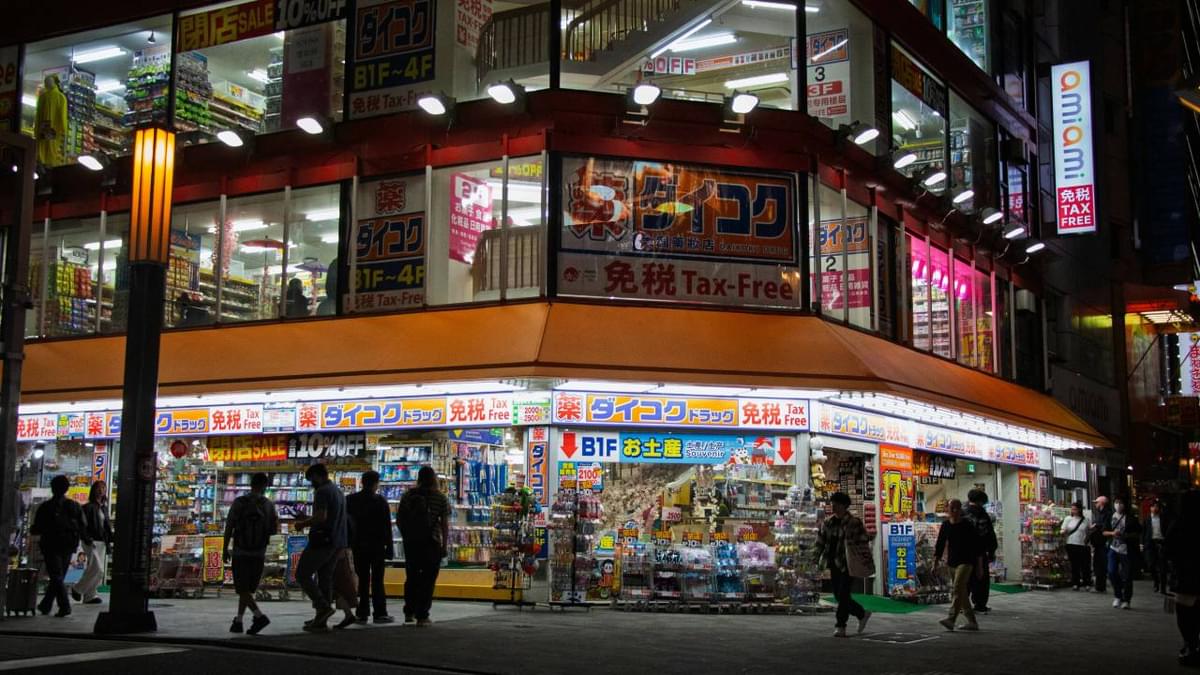
Tax-Free Shopping Rules in Japan
- Japan's consumption tax is 10%. Tourists can shop tax-free with:
- Minimum spend: ¥5,000 per store per category (general goods or consumables)
- Required: Valid passport at checkout
- Process: Tax deducted at register or refunded at service counter
- Important: Keep receipts, sealed packaging, and stamped forms until customs inspection
Payment Methods
- Credit Cards: Accepted at department stores, major chains, and boutiques
- Cash (Yen): Essential for markets, street vendors, and small shops
- IC Cards (Suica/PASMO/ICOCA): Rechargeable contactless smart cards for trains, buses, and participating shops. Load into Apple Wallet (iPhone 8+) for convenience
- QR Payments: PayPay is widely accepted at independent shops
Tokyo Shopping Guide 2026: Best Districts & Local Highlights
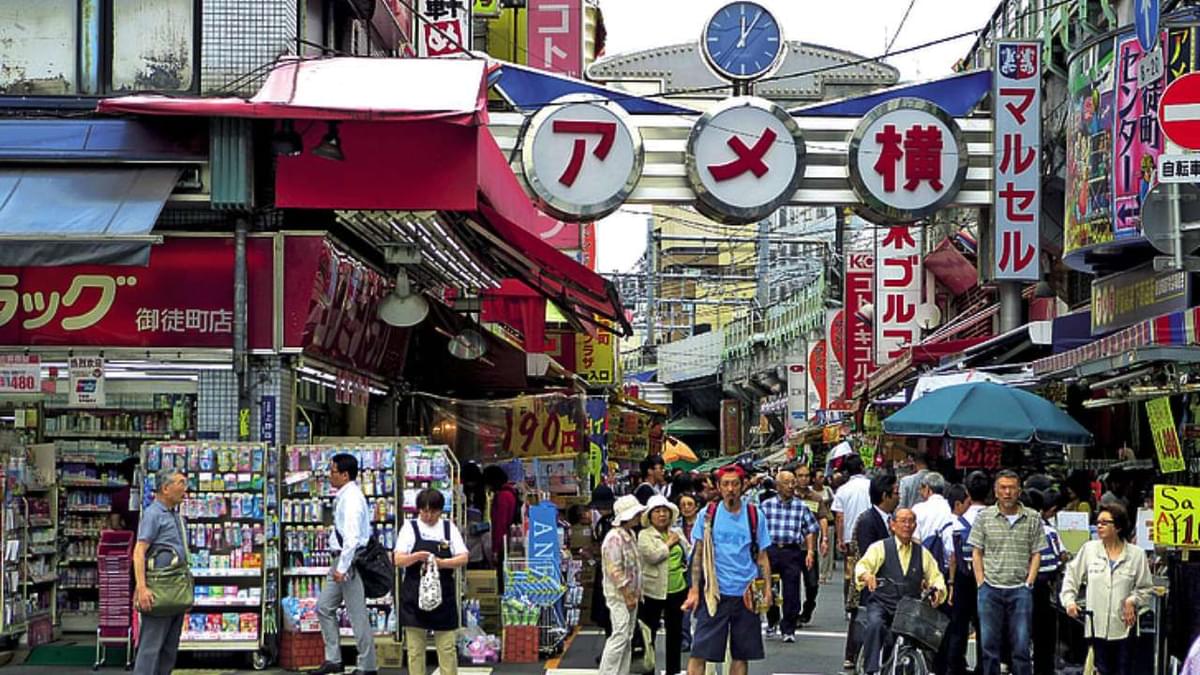
Ginza – Luxury Shopping District in Tokyo
Tokyo's premier luxury shopping area features international designer boutiques and renowned depachika (department store food halls) with gourmet souvenirs.
- Best for: Designer brands, flagship stores, premium department stores
- Top Locations: Ginza Six, Mitsukoshi Ginza, boutique side streets
- Station: Ginza/Ginza-itchome Station
- Hours: 10:00–20:00
- Price Range: High (¥10,000+)
Harajuku & Shibuya – Vintage Clothing & Streetwear Hotspots
Explore vintage clothing shops in Harajuku and Shibuya's basement thrift stores for curated secondhand fashion and emerging streetwear brands.
- Best for: Street style, vintage shops, limited-edition sneakers
- Top Areas: Takeshita Street, Cat Street, Shibuya Crossing
- Stations: Harajuku/Meiji-Jingumae, Shibuya Station
- Hours: 11:00–20:00
- Price Range: Low–Mid (¥1,000–¥8,000)
Akihabara – Tokyo’s Electronics & Anime Shopping District
Tokyo's electronics shopping district offers competitive prices on tech, manga collectables, and vintage gaming consoles.
- Best for: Electronics, gaming, anime merchandise, camera equipment
- Station: Akihabara Station
- Hours: 10:00–20:00
- Price Range: Low–Mid (¥500–¥50,000)
Asakusa & Tsukiji – Traditional Shopping & Food Markets
- Asakusa (Nakamise Street): Temple-side souvenir stalls, traditional crafts.
- Tsukiji Outer Market: Fresh seafood, Japanese food souvenirs
- Stations: Asakusa Station, Tsukiji/Shintomicho Station
- Hours: 09:00–18:00 (Tsukiji closes earlier)
- Price Range: Low–Mid (¥500–¥15,000)
Kappabashi – Tokyo’s Kitchenware Shopping Street
Located between Asakusa and Ueno, Kappabashi is Tokyo's premier destination for authentic Japanese knives and culinary tools.
- Best for: Professional knives, pottery, restaurant supplies
- Hours: 09:00–18:00
- Price Range: Mid (¥3,000–¥30,000)
Osaka Shopping Guide 2026: Best Markets & Fashion Streets
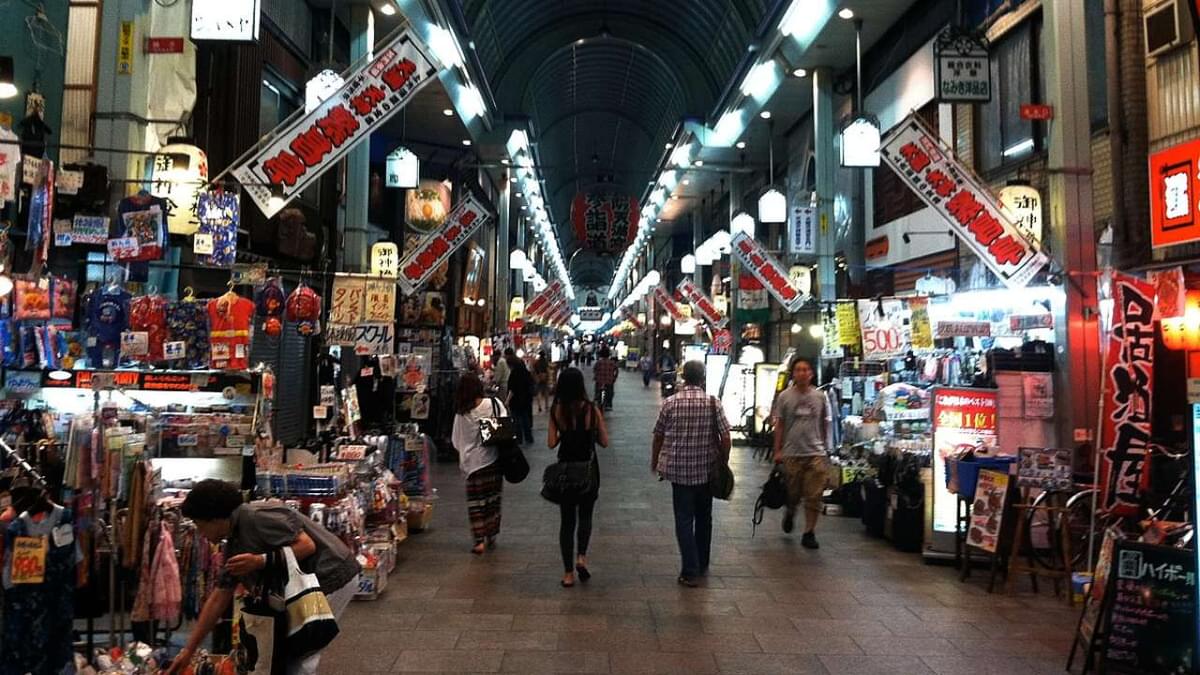
Shinsaibashi-suji Shopping Arcade – Osaka’s Main Shopping Street
Osaka's main covered shopping street connects fashion boutiques and souvenir shops.
- Nearby: Horie district (independent designers), Takashimaya Osaka department store
- Station: Shinsaibashi Station
- Hours: 11:00–20:00
- Price Range: Mid (¥2,000–¥15,000)
Kuromon Ichiba Market – Osaka’s Kitchen
Osaka's bustling food market offers eat-as-you-go seafood, takoyaki kits, and packaged delicacies.
- Best for: Fresh seafood, street food, edible souvenirs
- Station: Nippombashi Station
- Hours: 09:00–18:00 (arrive before 11:00)
- Price Range: Low–Mid (¥300–¥5,000)
Den Den Town – Osaka’s Electronics & Anime Hub
Osaka's electronics district rivals Akihabara with lower prices and fewer crowds.
- Best for: Anime merchandise, retro gaming
- Station: Nippombashi Station
- Hours: 10:00–20:00
- Price Range: Low–Mid (¥500–¥40,000)
Amerikamura (Amemura) – Vintage Clothing & Streetwear
Osaka's youth culture hub features vintage clothing shops, record stores, and independent fashion labels.
- Best for: vintage clothing shops, record stores
- Station: Shinsaibashi/Yotsubashi Station
- Hours: 12:00–20:00
- Price Range: Low–Mid (¥1,500–¥10,000)
Umeda District – Osaka’s Luxury & Department Store Shopping
Grand Front Osaka, HEP Five, and Hankyu department stores anchor Osaka's polished shopping district.
- Best for: luxury shopping
- Station: Osaka/Umeda Station
- Hours: 10:00–20:00
- Price Range: Mid–High (¥5,000+)
Kyoto Shopping Guide 2026: Traditional Crafts & Local Markets
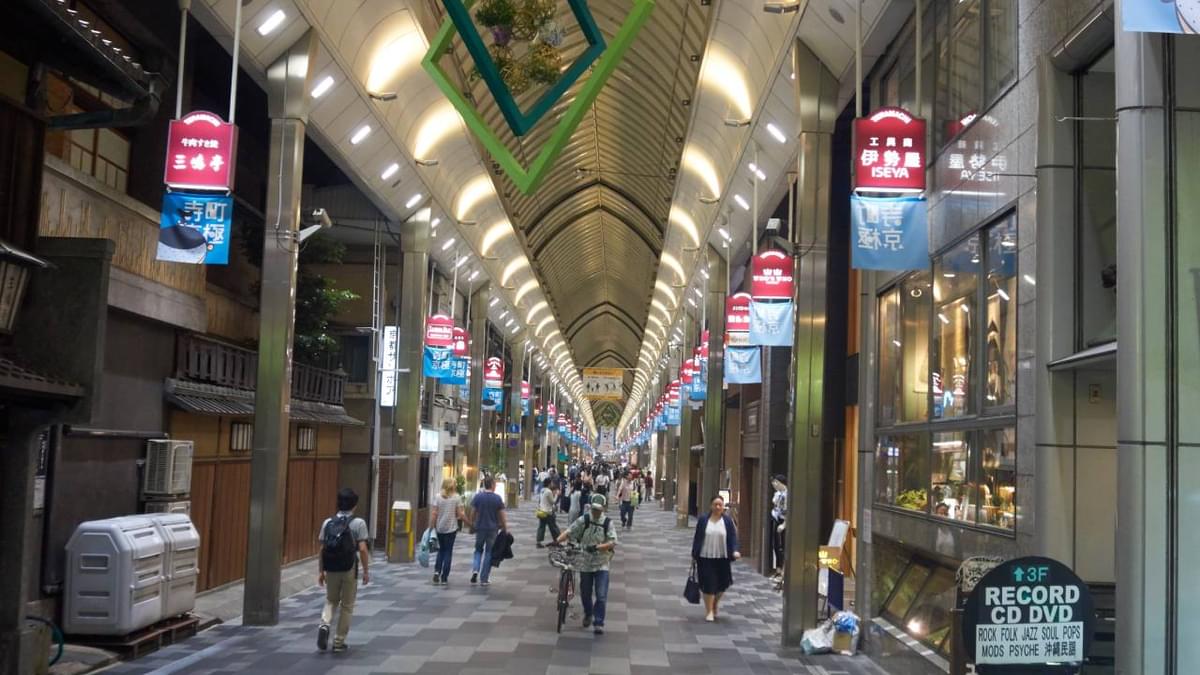
Nishiki Market – Kyoto’s Historic Food Market
Kyoto's 400-year-old covered market sells pickled vegetables, matcha products.
- Best for: Japanese food souvenirs.
- Station: Shijo Station
- Hours: 10:00–18:00 (arrive early to avoid crowds)
- Price Range: Low–Mid (¥500–¥8,000)
Gion District – Kyoto’s Traditional Craft Shops
Explore traditional Japanese crafts, including lacquerware, folding fans, kimono fabrics, and handmade ceramics in Kyoto's historic geisha quarter.
- Best for: folding fans, kimono fabrics, and handmade ceramics
- Station: Gion-Shijo Station
- Hours: 10:00–18:00
- Price Range: Mid–High (¥3,000–¥50,000+)
Shijo Kawaramachi – Kyoto’s Department Store District
Takashimaya and Daimaru department stores offer luxury goods and curated local crafts.
- Best for: luxury goods
- Station: Kawaramachi Station
- Hours: 10:00–20:00
- Price Range: High (¥5,000+)
Teramachi & Shinkyogoku Arcades – Budget Shopping in Kyoto
Budget-friendly covered shopping streets with bookstores, casual fashion, and affordable souvenirs.
- Best for: casual fashion and affordable souvenirs.
- Hours: 10:00–20:00
- Price Range: Low (¥500–¥5,000)
Kyoto Flea Markets – Kitano Tenmangu & Toji Temple
Antique ceramics, vintage kimono, and handmade crafts. Arrive at opening (dawn–09:00) for the best selection.
- Kitano Tenmangu: 25th of each month
- Toji Temple: 21st of each month
Budget Breakdown: Shopping Costs in Tokyo, Osaka & Kyoto
| Budget Level | Daily Spending | What You Get |
| Low Budget | ¥5,000–¥15,000 | Market foods, thrift finds, drugstore items, train fare |
| Mid Budget | ¥20,000–¥50,000 | Boutique clothing, quality kitchenware, department store goods |
| High Budget | ¥60,000+ | Designer purchases, premium crafts, and luxury department stores |
Transportation & Practical Shopping Tips

Getting Between Cities
- Tokyo ↔ Kyoto: 2.5 hours via Shinkansen (bullet train)
- Osaka ↔ Kyoto: 30–90 minutes via JR/private rail
- IC Cards: Suica, PASMO, and ICOCA work across all three cities for trains and buses
Best Times to Shop
- Weekday mornings (10:00–12:00): Fewer crowds at department stores and markets
- Avoid weekends: Major tourist districts get extremely crowded
- Markets: Arrive at opening for the best selection and comfortable browsing
Bottom Line: Ultimate Shopping in Tokyo, Osaka & Kyoto
Shopping in Tokyo, Osaka, and Kyoto offers diverse experiences from Ginza's luxury boutiques to Kuromon's food markets and Gion's traditional craft shops. Master tax-free shopping rules, leverage IC cards for seamless transportation, and time your visits to avoid crowds. Whether hunting vintage clothing in Harajuku, exploring electronics in Akihabara, or discovering Nishiki Market's culinary treasures, this guide equips you with neighbourhood expertise, budget breakdowns, and insider timing strategies. Carry your passport, mix cash with card payments, and explore each city's unique shopping districts for an unforgettable Japanese retail journey. Customise your next Japan tour packages from Pickyourtrail for a seamless experience.
FAQs
Is cash or card better for shopping in Japan?
Carry both. Use credit cards at malls and chains, but cash (yen) for local shops and markets. IC cards (Suica, PASMO) work for quick contactless payments.
How much should I budget for shopping in Tokyo vs Osaka?
- Tokyo (Ginza): ¥10,000+ per item.
- Osaka (Amerikamura, Den Den Town): ¥1,500–¥8,000.
- Markets (Tsukiji, Kuromon): ¥500–¥5,000 for food.
What are the requirements for tax-free shopping in Japan?
Show your passport and spend at least ¥5,000 per store. Keep sealed goods and receipts for customs.
Where can I buy authentic Japanese knives in Tokyo?
Visit Kappabashi Kitchen Town or Tsukiji Market. Prices: ¥8,000–¥50,000 for quality chef’s knives.
What are the best neighbourhoods for vintage clothing in Tokyo?
Explore Harajuku, Shibuya, Nakameguro, and Daikanyama for top vintage clothing stores.
Update your location?



